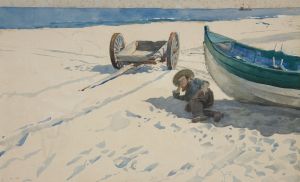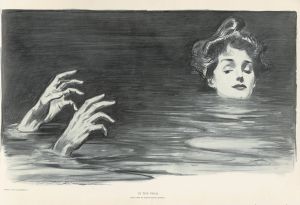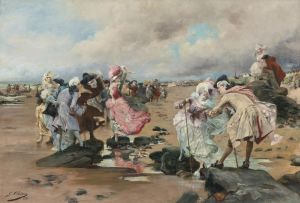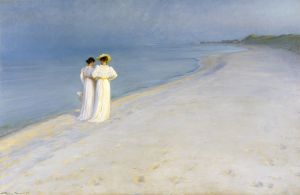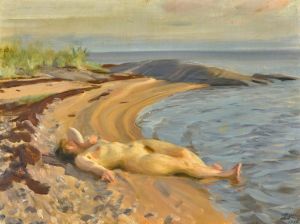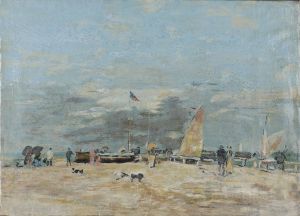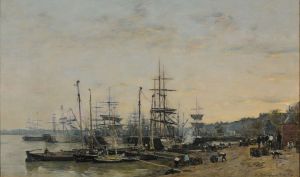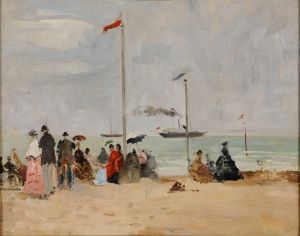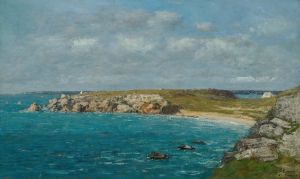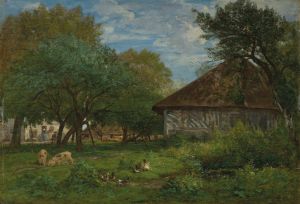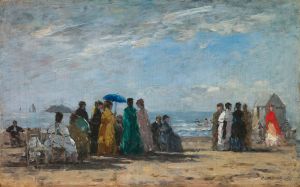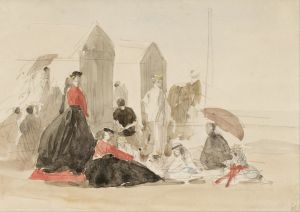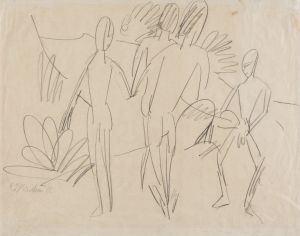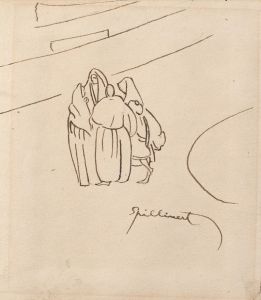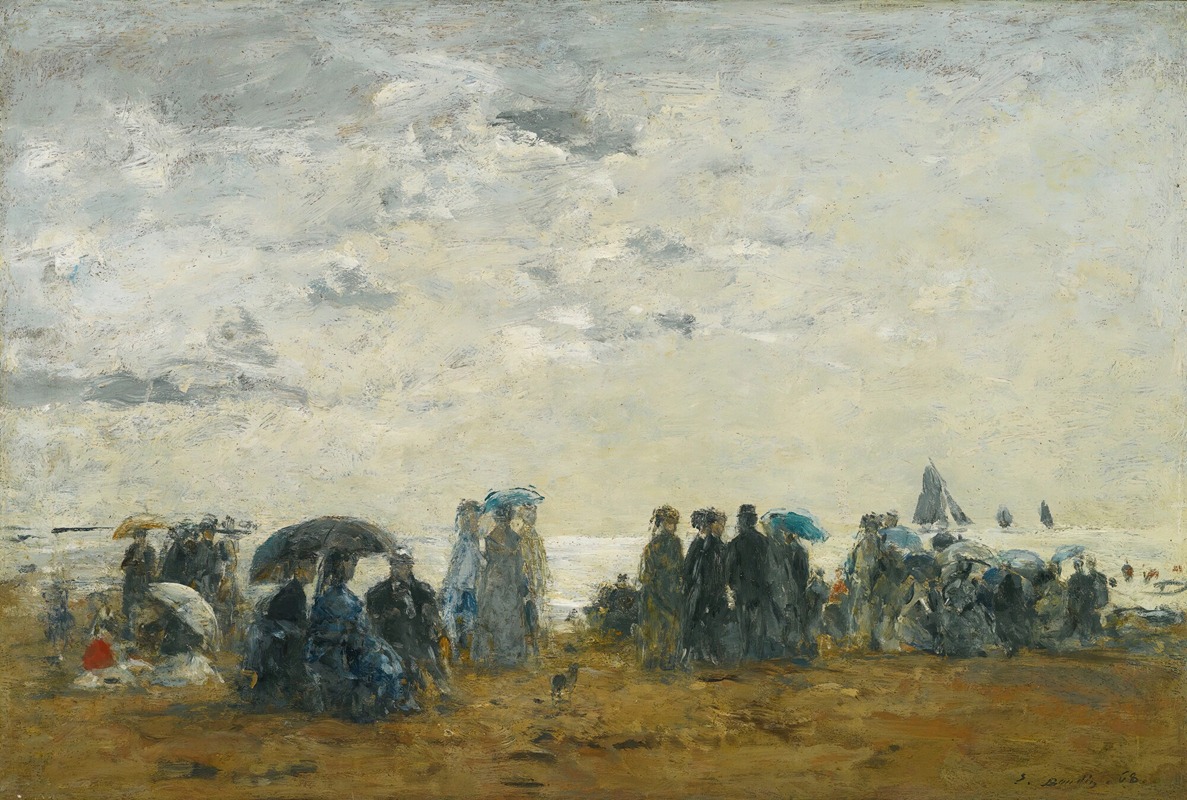
Scène De Plage À Trouville
A hand-painted replica of Eugène Boudin’s masterpiece Scène De Plage À Trouville, meticulously crafted by professional artists to capture the true essence of the original. Each piece is created with museum-quality canvas and rare mineral pigments, carefully painted by experienced artists with delicate brushstrokes and rich, layered colors to perfectly recreate the texture of the original artwork. Unlike machine-printed reproductions, this hand-painted version brings the painting to life, infused with the artist’s emotions and skill in every stroke. Whether for personal collection or home decoration, it instantly elevates the artistic atmosphere of any space.
Eugène Boudin's painting Scène de Plage à Trouville (Beach Scene at Trouville) is a notable work by the French artist, who is widely regarded as one of the precursors of Impressionism. Boudin, born in Honfleur in 1824, is celebrated for his depictions of coastal scenes, particularly those capturing the beaches of Normandy. His works often reflect his fascination with the interplay of light, sky, and water, as well as his ability to portray the leisurely activities of the bourgeoisie during the 19th century.
This painting, like many of Boudin's works, depicts a beach scene in Trouville-sur-Mer, a popular seaside resort in Normandy during the 19th century. Trouville was a favored destination for the French upper class, and Boudin frequently painted its beaches, capturing the elegance and charm of its visitors. In Scène de Plage à Trouville, Boudin portrays a group of figures, likely vacationers, enjoying the seaside. The composition typically includes women in fashionable dresses and hats, seated or strolling along the beach, often accompanied by parasols. These elements are characteristic of Boudin's beach scenes, which document the social customs and attire of the time.
Boudin's technique in this painting exemplifies his mastery of plein air painting, a method that involves working outdoors to capture the transient effects of light and atmosphere. His loose, fluid brushstrokes and delicate use of color convey the breezy, sunlit ambiance of the beach. The sky, a dominant feature in many of Boudin's works, is rendered with soft, dynamic clouds that reflect his keen observation of nature.
Eugène Boudin's beach scenes, including Scène de Plage à Trouville, were influential in the development of Impressionism. His focus on natural light and everyday life resonated with younger artists such as Claude Monet, who regarded Boudin as a mentor. While Boudin's style remained distinct from the more radical techniques of the Impressionists, his work laid the groundwork for their exploration of modern life and the effects of light.
Today, Scène de Plage à Trouville is appreciated as a testament to Boudin's skill and his contribution to the evolution of modern art. The painting is part of the broader legacy of his beach scenes, which continue to be celebrated for their charm, historical significance, and technical brilliance.





